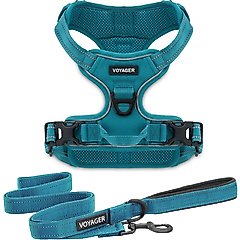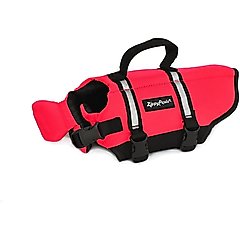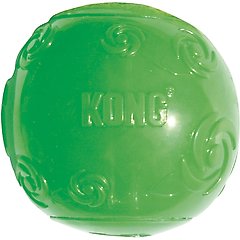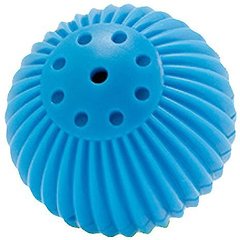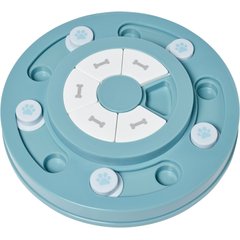Senior Dog Exercise: Which Routine Is Right for Your Pup?

Photo by Irina Nedikova/iStock/Getty Images Plus
Your senior dog may have a little extra gray hair around the muzzle or stop to smell the flowers more, but one thing remains the same: They still need exercise.
But which exercise routine is right for your senior pup? The short answer is to let your pet’s mobility and personality guide the way.
According to Leslie Sinn, DVM, DACVB, CPDT-KA, a veterinarian and board-certified veterinary behaviorist in Ashburn, Virginia, many dogs enter the senior phases at 7 to 9 years of age, but for small dogs, that number tends to be 10 to 12 years old.
Here’s how much exercise senior dogs need, the best ways to provide it, and what to avoid when exercising your senior dog.
Key Takeaways
- Senior dogs still need exercise, but which kind might depend on your dog’s individual preferences.
- Most dogs are considered seniors when they’re 7 to 9 years of age, but some smaller dogs won’t lose speed until they’re at least 10.
- There’s no one right exercise for senior dogs, but walking, swimming, or chasing a ball close to the ground can all be good options.
- Playing hide-and-seek with treats (in moderation) can also be a great way to get your senior pup moving.
How Much Exercise Do Senior Dogs Need?
There’s no set formula to determine how much exercise is enough for a senior dog, experts say.
Every dog will actually let you know how long or far they want to walk if you’re paying attention enough, says Liz Stelow, DVM, DACVB, a veterinarian and behavior clinician at UC Davis School of Veterinary Medicine in Davis, California. “Some will seem unsatisfied when they return home and may need another form of exercise,” she notes. “Others will start to drag during the walk and immediately lie down when they return home.”
Here are two factors that might influence how much exercise your senior canine needs:
Breed
Some dog breeds are just more athletic than others. The Border Collie, Siberian Husky, or Jack Russell Terrier—to name a few—often remain active in their golden years, even if they move more slowly.
On the other hand, mellow breeds like the Pug or Havanese have a reputation for taking it easier once they get older.
Health
Illness, injury, or chronic conditions can limit the stamina and mobility of your senior dog. For instance, Dr. Stelow points out that joint issues such as arthritis might dictate what type of exercise your senior dog can do and for how long.
Chat with a vet about appropriate exercises if your dog has mobility issues.
What Are the Best Exercises for Senior Dogs?
Even though they’re a senior, your dog still needs enough activity to maintain a healthy weight and cardiovascular health. Too little activity can lead to obesity.
“Additional weight places significant wear and tear on joints and can cause substantial increased pain,” Dr. Sinn says.
Choosing the best exercise depends on your pet’s abilities and interests, but here are some good contenders.
Walking
You’ve no doubt taken countless walks with your dog, so keep up the routine as your pet ages. Walking is one of the simplest and best senior dog exercises.
You might have to adjust how far you go or how quickly you walk, but giving your pup a chance to stretch their legs and experience new sights and smells is physically beneficial and mentally enriching.
Choose an extra comfy dog harness that doesn’t tug at their neck.
Recommended Products
Swimming
Don’t mistake this for taking your senior dog to a lake or large body of water and expecting them to swim by diving in. But senior dogs with joint issues can especially benefit from low-impact exercises, like walking through knee-deep water in a pool.
“This offers resistance that maintains muscle tone without impact on joints,” says Dr. Stelow.
If your dog has been a swimmer their whole life, they may continue to do so as long as they’re comfortable with it (you should never force them in the water—let them go on their own). A life vest is always a smart idea.
Recommended Products
Chasing a Lure or Ball
If your senior dog seems a little reluctant to get moving, capitalize on their natural prey drive. A lure—like what you’ll find on a flirt pole for dogs—or a rolling ball might be just what they need. As a bonus, both can be done just as easily indoors if the weather is too hot, cold, or wet.
Recommended Products
Experts caution against throwing objects into the air for your dog to jump up and retrieve, since that’s more likely to cause joint damage. You can still give your senior dog the thrill of the chase, but keep toys on the ground.
Enrichment Activities
Don’t forget to engage your dog’s senses for mental enrichment. As a bonus, it’ll encourage your dog to move around.
Try a puzzle toy where your pet has to search for a tasty treat, or play a fun game of hide-and-seek using treats scattered around the house or yard.
Recommended Products
Which Exercises Should Senior Dogs Avoid?
Even if they have a lot of get-up-and-go, not just any activity is the right fit for senior dogs. Dr. Sinn advises against exercise that puts additional stress and strain on the joints, such as jumping for balls or flying disks, or activities with a lot of fast starts and stops.
Also be mindful of the surface that your pet is exercising on; running fast on hard surfaces—like concrete—can damage aging joints.
Whenever possible, choose a softer surface, like a grassy field. But beware of surfaces with too much give. Soft sand can also be damaging to your dog’s joints or ligaments, although hard-packed sand should be fine for most pets.
Whichever activity you choose, pay attention to your dog’s cues to assure that they’re a fan. They’ll be grateful for your help in keeping them active in their senior years.
FAQs About Senior Dog Exercise
Q: Should you walk a 14-year-old dog?
A: Yes, as long as your pup isn’t in pain, a 14-year-old dog will still benefit from a walk. However, the frequency and duration may need to be adjusted based on health and mobility. “The specific age of dog matters far less than overall health,” says Dr. Stelow.
Q: Can a dog who has mobility issues still exercise?
A: Even with mobility issues, it’s still possible—and important—for your senior dog to exercise. Some dogs may need extra support with a mobility cart, or even a stroller to carry them part of the way. Talk to a vet about the best plan for your dog.
Q: Do senior dogs need supplements to exercise?
A: They can be helpful, but you should always talk to your vet about adding any supplements to a dog’s diet. Dr. Sinn notes that supplements may benefit mild arthritis, but again, speak to your vet to see if it’s right for your individual dog.
Q: When should I see a vet if my senior dog is having trouble exercising?
A: Consult your veterinarian right away if your dog is having trouble exercising or seems to be in pain. Dr. Stelow says that groaning or an inability to do routine tasks—like jumping up on the sofa—might be the result of an injury or the onset of arthritis.
Shortness of breath or general weakness during routine exercise might be a sign of cardiovascular or neurological issues. This is another good reason to make sure your pup gets routine vet care as a senior.


